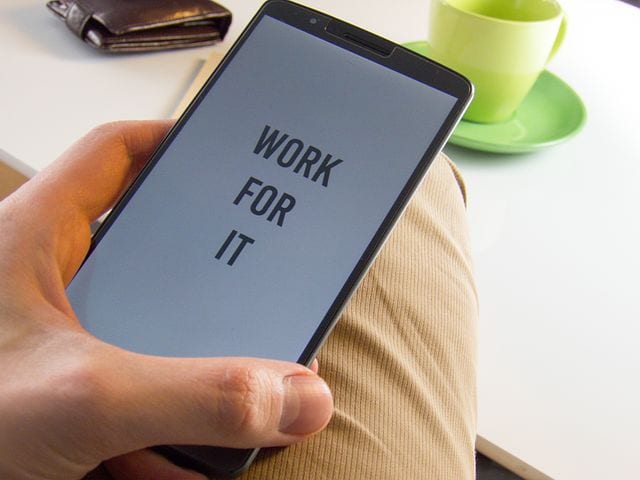
At Calendar, we have defined time management as “the ability to plan, organize, and control your time.” Another big definition we use is, “save time, be more productive, and focus on the things that matter.” That’s it, not too complicated, right?
Manage Your Time
The reason why we’ve put such an emphasis on time management is that time is your most valuable resource. Moreover, it’s so meaningful to our daily lives as it;
- Ensures that you make the most of this finite source.
- Encourages self-discipline.
- Helps you get more done in less time.
- Reduces stress and anxiety.
- Makes you feel more fulfilled.
- Prevents you from being that person. In other words, you’ll earn a reputation of being dependable.
- Manages your energy.
- Prevents indecisiveness and procrastination.
- Allows you to take advantage of new opportunities.
- Helps you reach your goals.
- Identifies your priorities.
- Improves every facet of your life, ranging from your career to personal relationships.
Improving your time management should definitely be something that you improve upon. And, while tried and true techniques like tracking how you spend your time, delegation, and blocking out distractions work, they’re not always exciting.
Instead, you can use gamification. Implementing gaming techniques can increase motivation, engagement, and problem-solving skills. It also improves resource management, speaks creativity, and enhances teamwork abilities.
Also, games and activities are just a fun way to learn. And, they can be something that you do during your downtime or as a team-building activity.
With that in mind, here are 15 time management games activities you can play if you want to manage your time more effectively.
1. How Long is a Minute?
Overall, we’re fairly decent at estimating time. However, there are a number of external and internal factors that can alter our perception of time.
For example, when we have something to look forward to, time dilutes. And, when you’re having fun, time does literally fly.
More interesting was a study involving a group of people who had to sit in a room for seven-and-a-half minutes without anything to do. Some felt that it was only two-and-a-half minutes. Others proclaimed that it felt like 20-minutes.
So, if you’re working with others, a simple activity you can do together is the minute challenge. Here, everyone closes their eyes and stands up. They sit down when they believe a minute has passed.
One person, or a timer, keeps track of the time so that they know when to open their eyes. It’s an effective way to demonstrate how everyone’s perception of time is different. And, if we over-or-underestimate time, that could throw off everyone’s schedules.
Of course, you can also do this on your own if you want a better idea of what the actual passage of time really is.
2. The Big Picture Challenge
Inspired by Orangeworks, here’s how this activity works;
- Divide your team into small groups,” each responsible for painting a small segment of The Big Picture.”
- Without knowing what the final image will be, the “teams must work together to ensure that all lines meet and colors match up.”
- “The painted image can be a representation of a company’s brand, conference theme, values, goals or even a recreation of a famous work of art.”
- After its completion and unveiling, the final masterpiece “can be proudly displayed back in the office as a constant reminder of what can be achieved through teamwork.”
The idea behind this is to encourage faster decision-making and prioritizing. More importantly, it fosters communication and collaboration.
3. The Mayo Jar
The mayo jar activity is straightforward. It’s an excellent way to visually highlight the importance of doing the most important tasks first.
Start with an empty jar. You’ll need materials like large rocks, smaller rocks, gravel, sand, and water. Next, try to get all of these items into the jar.
The only way this is possible is by starting with the big rocks and working your way. The biggest rocks are meant to represent your MITs. So, that’s why you always focus on them from the get-go.
4. Finding the Ace of Spades
Do you have multiple decks of cards? If yes, then this is a simple time management activity that you can do with at least one other person.
- Like any other card game, you’ll need to shuffle one pack so that it’s random. The other deck, however, will be organized in ascending order.
- Each player then gets a pack.
- Participants must then quickly find the Ace of Spades.
- As you might surmise, the player with the organized pack might find this to be less taxing than the individual with the mixed deck.
What does this accomplish? It highlights why the organization is so important to time management.
5. $86,400
With this time management activity, you would imagine that yourself or group members would have s $86,400 to spend. You can spend this fictional amount however you want.
There are two restrictions, though. First, you aren’t allowed to increase the amount of money. Second, you have to spend everything in one day, or you’ll lose it.
Once you’ve come up with a list of ideas, go over why and how you spent your $86,400. If playing with others, then everyone will discuss how they spent their money.
While it’s nice to occasionally pipe dream, this activity isn’t about money. It’s how you should spend your time more wisely. After all, there are only 86,400 seconds in a day so spend it on what’s most important. Because once it’s gone, you can’t reclaim your most valuable asset.
6. Blind Polygon
For larger groups, you might want to consider this classic team-building activity. It’s effective in encouraging communication and problem-solving skills, as well as working under a deadline.
Here’s how it works;
- Everyone must put on a blindfold and are given a 15-30 meter rope.
- The groups must then form a perfect square/triangle while blindfolded in a specific timeframe.
- Players must be connected to the rope at all times.
- You can do this in rounds or replay the game so that you can figure out how to accomplish this task more efficiently and quickly.
7. Desert Island
We’ve all been asked, “If you were marooned on a desert island and you could only take three things with you, what would you bring?”
While, here’s a game that puts a spin on that question.
Either by yourself or with a group, envision that you’re stranded on a desert island. Next, write down everything that you would take with you. The catch is that you only have two minutes to do this.
You’ll earn points for essential items, but none for nonessential. Hopefully, this will show the difference between what’s a priority and what’s not. And, knowing this will help you become more mindful of what you assign to your time blocks.
8. Circadian Rhythm
“Circadian Rhythm, “circadian” comes from the Latin and means, roughly, around (circa) the day (dian from diam which means day) and it’s a pretty special quality,” explains Tom Williams for Peak. “It helps your body understand what time of day it is and controls not just sleep but also your body temperature,” hunger, metabolic rate, “and the release of various hormones.”
“To put it more bluntly, it’s your body’s to-do-list,” states Abby Miller in a previous Calendar article. And, ideally, you should be working with your circadian rhythm by scheduling tasks accordingly.
For example, you wouldn’t work on a priority when you’re tired or drained of energy. Instead, you would do this when you’re most alert, energetic, and focused.
To help you, and even your colleagues, figure this out, write down your daily routine in hourly blocks of time. Next to each activity, take note of how you feel;
- ‘at 70%’
- ‘cruise control’
- ‘distracted’
- ‘hungry’
- ‘on fire’
- ‘slowing down’
- ‘tired’
- ‘vibrant’
After compiling this information, you should have a better understanding of your natural energy levels. When you do, you’ll be able to schedule the right activities at the right time. Eventually, you’ll be able to get more done in less time.
9. Time Squared
Here’s another activity that can be used to see how you’re spending each day. Of course, you can also do this with others.
- Print 3 pages containing 24 squares — these will represent the 24 hours of a day.
- On the first page, fill out the squares with routine activities. For example, if you sleep for 7 hours that would equal 7 squares.
- On the second page, list how non-working time is spent at work, such as checking email or water cooler chats.
- Summarize the data from these two pages on the third page. You can use different colors to tell the pages apart.
- The empty or uncolored squares? That’s”‘productive time.”
Thanks to visualization, you can see how you’re spending your time. That should make it easier to reduce or eliminate certain activities so that you’ll have more productive blocks of time.
10. What I Did Yesterday
With this game, your team members can identify patterns in their workday. Just have them jot down 10 things that they did at work yesterday. On another piece of paper, ask them to record 5 items they expect will be discussed at their next performance review or one-on-one.
They should then look at the two lists together. Why? Because you want them to see which activities they did yesterday will impact the second list.
A variation of this would be putting the 10 things that they did yesterday on an “Importance/Urgency” grid.
In either case, this should encourage your team members to focus on their priorities.
11. Delegation Skill Practice
Here’s a fun time management activity where players imagine that they have a new assistant. That means they can finally offload some of the fewer critical tasks that were noticed in the previous activity.
Divide participants into groups of 3; a delegator, an employee, and an observer. The delegator should define an unpleasant task and assign it to the employee. The observer will then record how well this was explained and share their feedback.
Rotate these positions so that everyone has a turn. By the end, this should help everyone sharpen their delegating skills.
12. Dealing With Distractions
When it comes to productivity, distractions can be lethal. Thankfully, this activity can help you identify your most common distractions so that you can eradicate them.
An easy way to do this would be to track your time over several days. Write down everything you’ve been doing. You may notice that you’re spending too much time on social media or multitasking.
Since you’re aware of this, you can come up with solutions to stop letting distractions eat-up your valuable time.
13. Colored Blocks
As long as you have a set of colored blocks, you’re good to go. Just beware that you’ll need more blocks if doing this with others.
With that out of the way, here’s how this works;
- Place the blocks on a table. You then have one minute to pick up as many blocks as you can during that timeframe.
- You’re only permitted to use your non-dominant hand. As such, you may be able to only pick up one at a time.
- When the 60-seconds are up, write down or reflect on the results.
- Do this again, but this time, assign a point value to each color.
- Now, you’ll have to think about the number of blocks you can grab, as well as the points associated with them.
The idea behind this activity is to demonstrate the importance of doing the most important tasks first, organization and planning.
14. Ribbon of Life
Want to know how much time you have at your disposal? Well, this activity will certainly help achieve that goal.
All you need to get started are a pair of scissors and a ribbon that’s 100cm long. Next, ask what the estimated lifespan is of an individual. On average, that’s 79 years old, which means you’ll want to cut-off 21 cm from the ribbon so that you’ll have 79 left.
You’ll then want to cut off how old you currently are or the average of your team. So, if that would be 40, then you’ll need to cut off 40cm more. With the remaining 59 cm, you’ll subtract the average time you spend commuting, eating, and sleeping. Don’t forget about time off from work as well, such as weekends, public holidays, and vacation time.
The remaining amount of ribbon left is what you have to make or break your life! So, squeeze as much out of it as possible.
Related: 25 Best Habits to Have in Life
15. Overcooked!
Finally, there’s this video game where you manage a restaurant. The premise is that you must prepare and serve food to customers in stressful situations. It’s a fun and interactive way to help you make more rapid decisions on how to put out fires.
You can purchase the game at Team 17.









